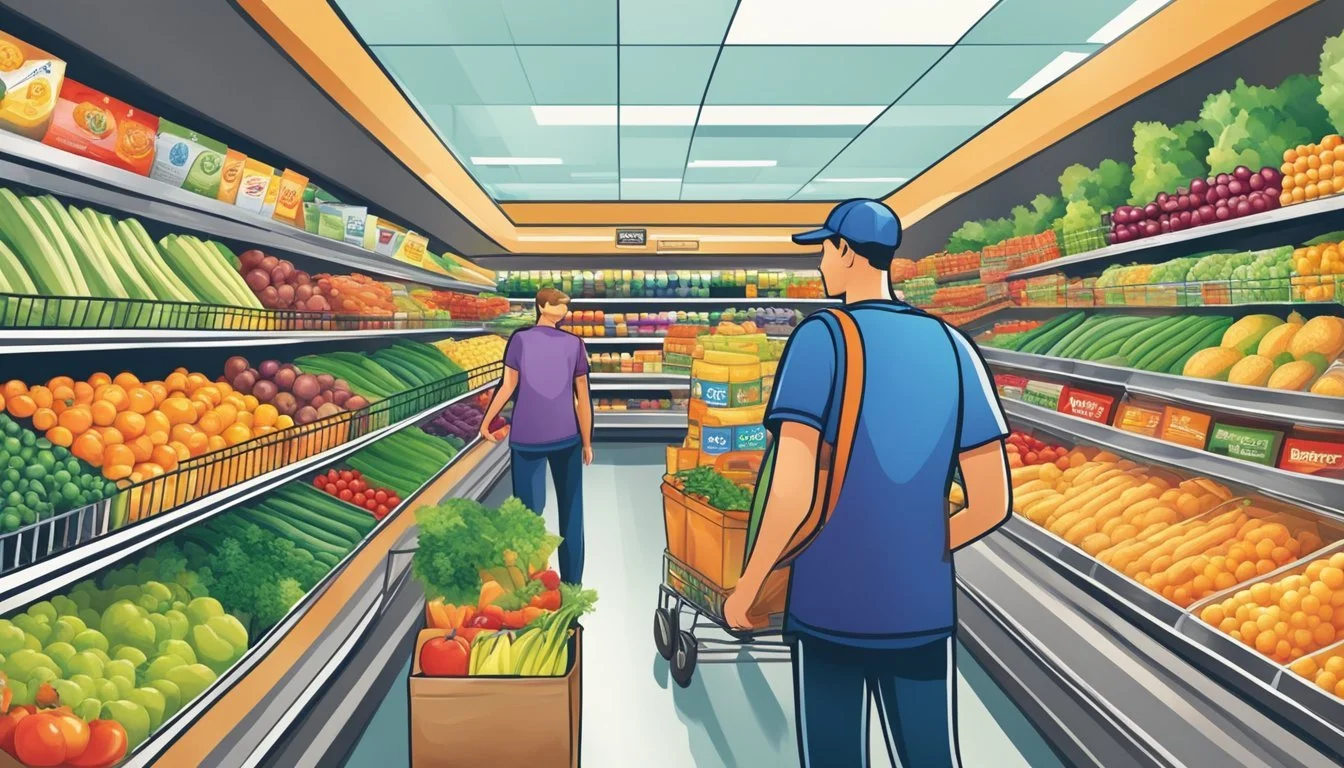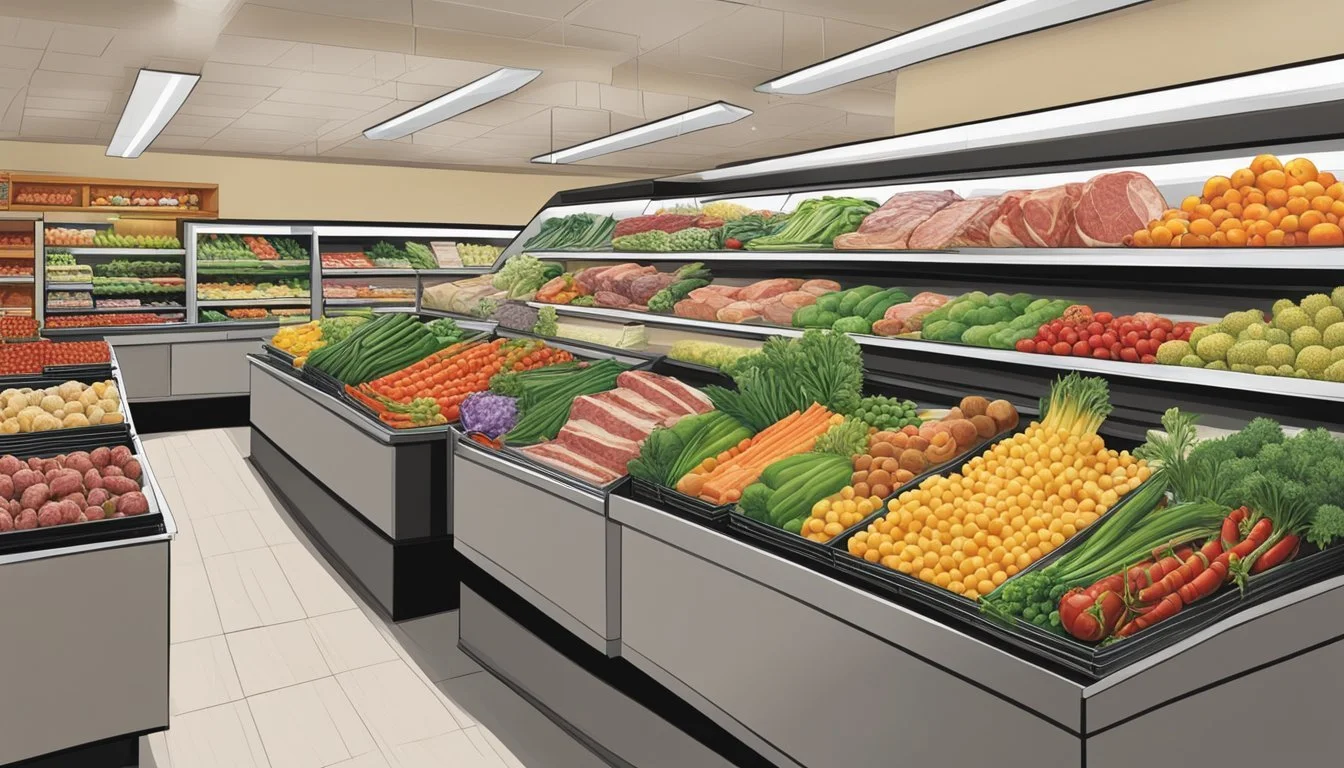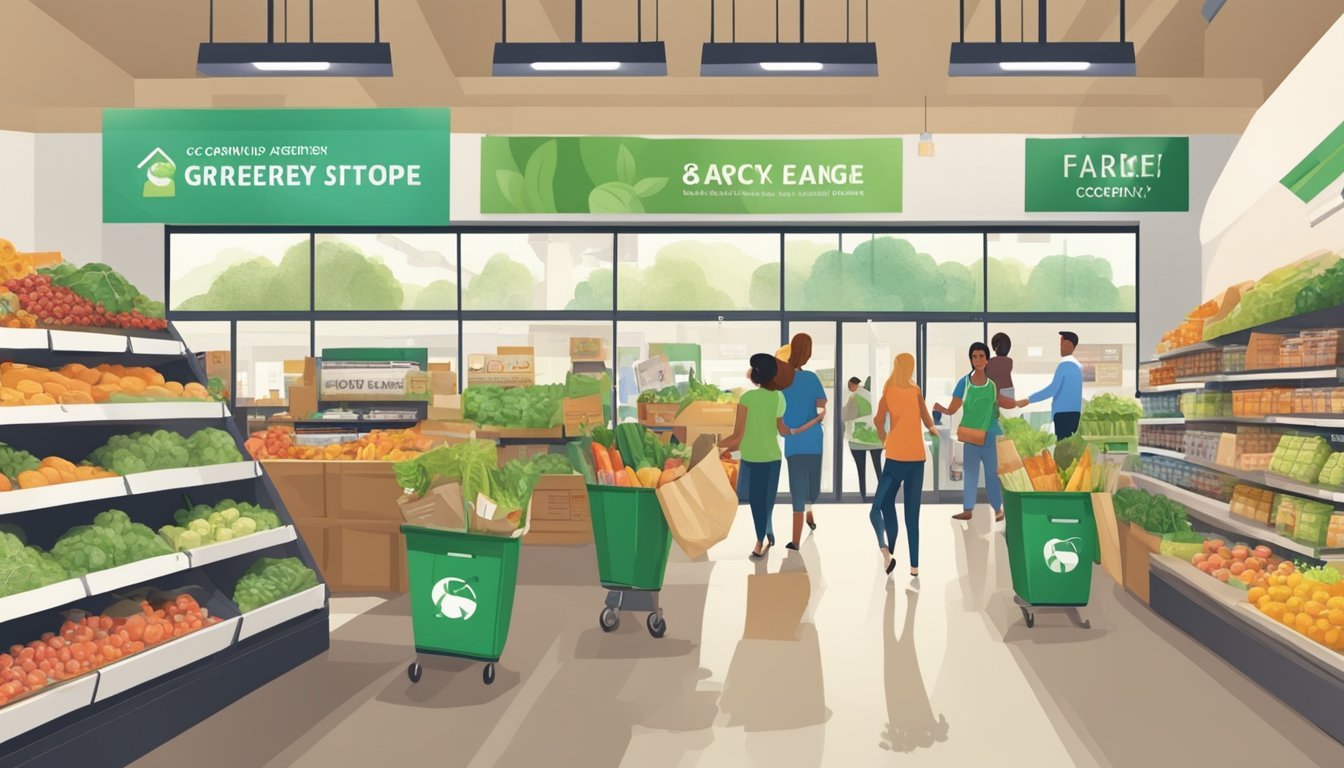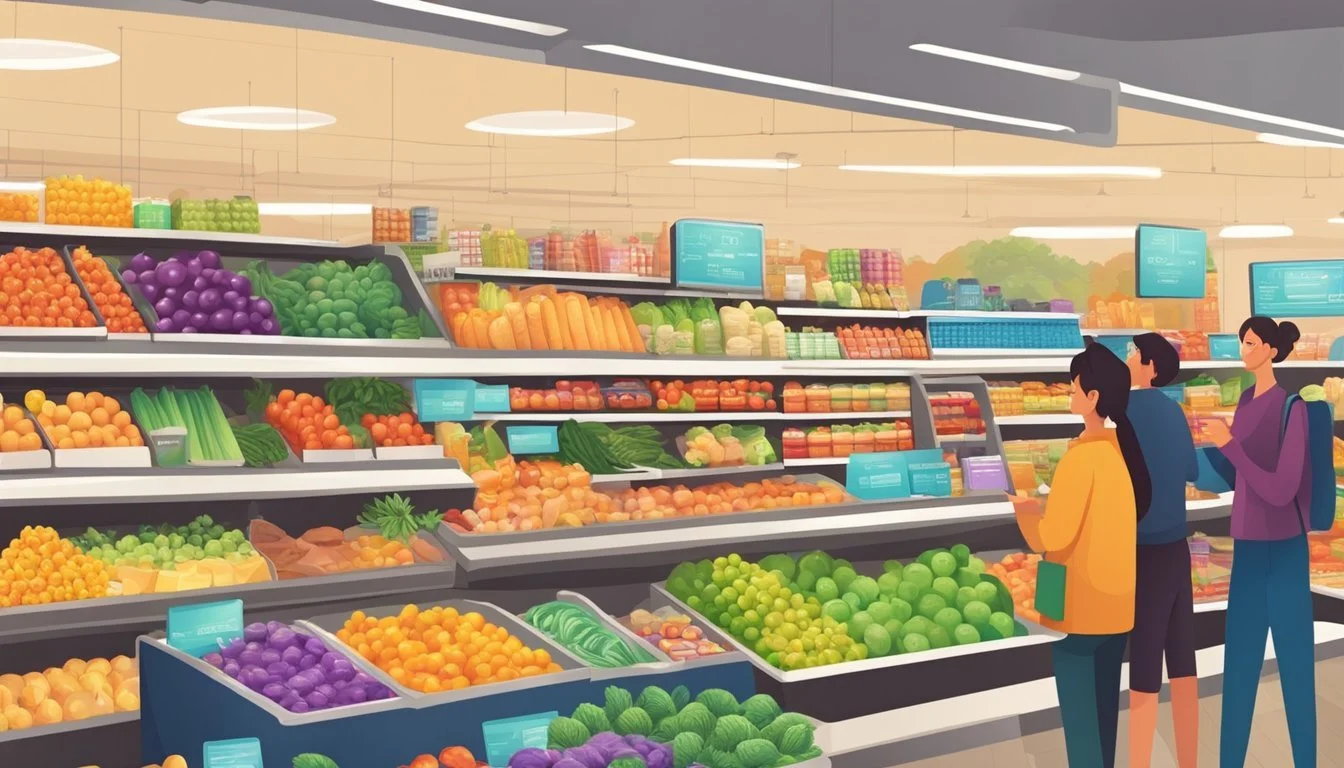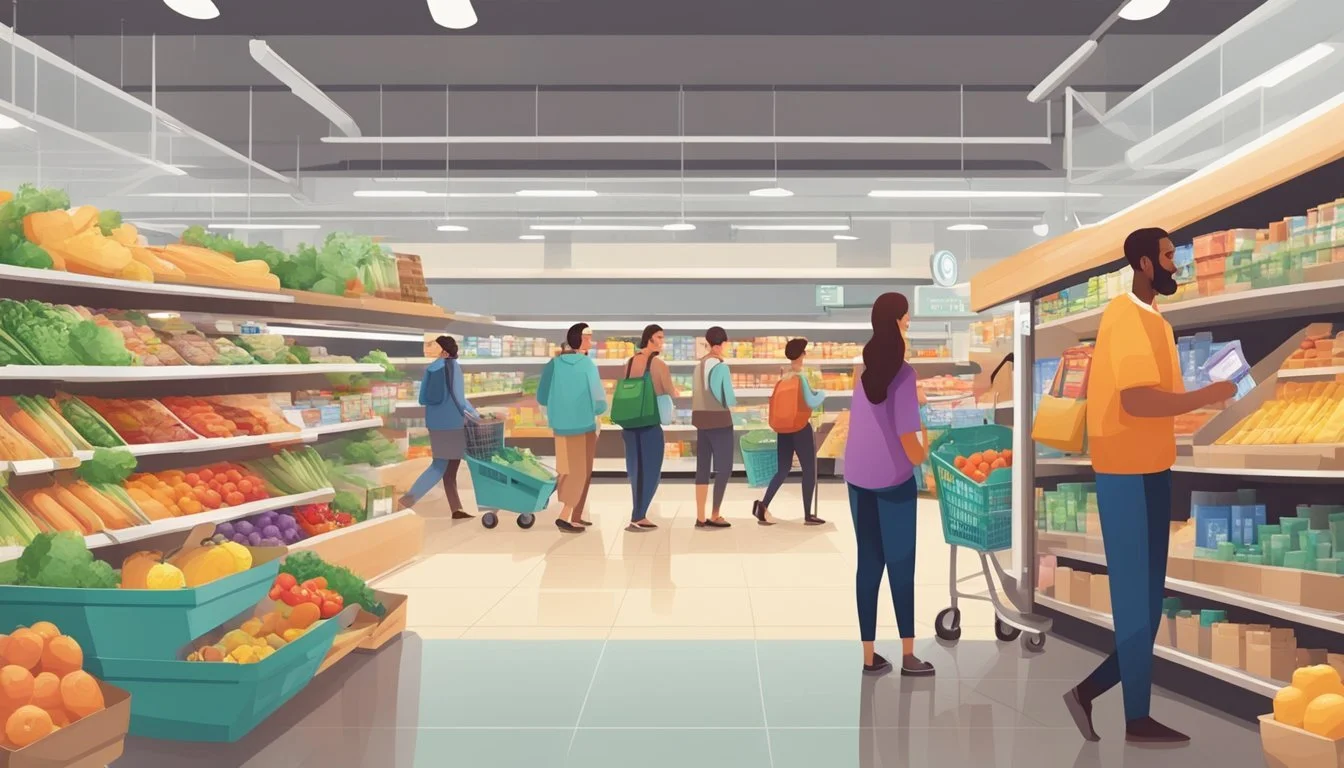Lucky Supermarkets vs Raley's
A Comprehensive Comparison of Northern California's Top Chains
Grocery shopping is a weekly ritual for many households, and choosing the right supermarket can significantly impact both budget and satisfaction. In the Bay Area, Lucky Supermarkets and Raley's are two popular options that cater to different customer needs.
Lucky Supermarkets generally offers lower prices compared to Raley's, making it a better choice for budget-conscious shoppers. Lucky's focus on affordability often translates to savings on everyday essentials and staple items. Raley's, on the other hand, tends to emphasize quality and variety, particularly in its fresh produce and specialty departments.
The decision between Lucky Supermarkets and Raley's ultimately depends on individual priorities. Those seeking the best deals may prefer Lucky, while shoppers who value a wider selection of premium products might lean towards Raley's. Both stores have their strengths, and customers may find that a combination of the two best suits their grocery needs.
Overview of Lucky Supermarkets and Raley's
Lucky Supermarkets and Raley's are two prominent grocery store chains serving communities across California and neighboring states. Both retailers have deep roots in the region and cater to different customer segments.
History and Presence
Lucky Supermarkets began operations in the 1930s and has since become a familiar name in Northern California and the Bay Area. The chain is now owned by The Save Mart Companies, which also operates stores under the Save Mart and FoodMaxx brands. Lucky has a strong presence in urban and suburban areas, with numerous locations throughout Northern California.
Raley's, founded in 1935 by Thomas P. Raley in Placerville, California, has grown into a family-owned grocery empire. The company operates stores under various brands including Raley's, Bel Air, and Nob Hill Foods. Raley's has expanded its reach beyond California, with locations in Nevada and Arizona. The chain is particularly well-established in the Sacramento area and surrounding regions.
Target Demographics
Lucky Supermarkets focuses on providing value to budget-conscious shoppers. The chain offers competitive prices and frequent promotions to attract customers looking for affordable groceries. Lucky stores are often found in diverse neighborhoods, catering to a wide range of ethnic and cultural preferences.
Raley's positions itself as a higher-end grocery option, appealing to shoppers seeking quality products and a more upscale shopping experience. The chain emphasizes fresh, organic, and locally-sourced items. Raley's target demographic includes health-conscious consumers and those willing to pay a premium for superior products and service.
Both chains adapt their offerings to meet the needs of their respective customer bases, with Lucky focusing on everyday low prices and Raley's highlighting premium selections and customer service.
Assortment and Quality of Goods
Lucky Supermarkets and Raley's offer distinct selections of products to cater to different customer preferences. Their offerings span fresh produce, meats, seafood, organic items, and prepared foods.
Produce Variety and Freshness
Lucky Supermarkets provides a wide array of fruits and vegetables at competitive prices. Their produce section features both conventional and organic options, with a focus on local, seasonal items when available.
Raley's, on the other hand, is known for its commitment to high-quality produce. They source from local farms and offer an extensive organic selection. Raley's often displays information about the origins of their produce, allowing customers to make informed choices.
Both stores maintain strict freshness standards, but Raley's tends to have a slight edge in terms of overall produce quality and variety.
Meat and Seafood Options
Lucky Supermarkets offers a standard selection of meats and seafood, including both fresh and frozen options. Their meat department provides common cuts at affordable prices, catering to budget-conscious shoppers.
Raley's takes pride in its premium meat and seafood offerings. They feature a wider range of cuts, including prime-grade beef and specialty items. Raley's also emphasizes sustainably sourced seafood and often provides cooking tips and recipe suggestions.
For those seeking higher-end or specialty meats, Raley's is likely to have more options. However, Lucky Supermarkets remains competitive for everyday meat purchases.
Organic and Packaged Products
Lucky Supermarkets has expanded its organic selection in recent years, offering a mix of national brands and private-label organic products. Their packaged goods section covers most essentials at reasonable prices.
Raley's excels in this category, with a comprehensive range of organic and natural products. They carry numerous specialty brands and have a robust selection of gluten-free, vegan, and other dietary-specific items.
Both stores offer their own private-label organic lines, but Raley's typically provides a broader assortment of organic and specialty packaged goods.
In-House Prepared Foods and Bakeries
Lucky Supermarkets offers basic in-house prepared foods, including rotisserie chickens, sandwiches, and salads. Their bakery section provides standard items like breads, cakes, and pastries.
Raley's takes a more gourmet approach to prepared foods. They often feature chef-inspired dishes, a salad bar, and a wider variety of hot and cold options. Raley's bakery is known for its artisanal breads, custom cakes, and high-quality pastries.
For those seeking more diverse or upscale prepared foods and baked goods, Raley's generally offers a superior selection. Lucky Supermarkets focuses on convenience and affordability in this area.
Pricing and Savings Opportunities
Lucky Supermarkets and Raley's offer distinct pricing strategies and savings programs. Their approaches to discounts, loyalty rewards, and overall costs impact shoppers' budgets differently.
Comparison of Prices and Costs
Lucky Supermarkets generally provides lower prices on many items compared to Raley's. Generic staples at Lucky often cost less than similar products at Raley's. For example, a gallon of milk at Lucky may be $0.50 cheaper than at Raley's.
Lucky emphasizes value pricing across departments. Their produce section features competitive rates on fresh fruits and vegetables. Raley's, while sometimes pricier, offers a wider selection of premium and organic options.
Meat prices at Lucky tend to be more budget-friendly. Raley's meat department focuses on higher-quality cuts, which can increase costs for consumers.
Discount Programs and Coupons
Both stores provide weekly ads with special deals. Lucky's circular typically includes more discounted items. They also accept manufacturer coupons, doubling the value on select offers.
Raley's runs fewer but often deeper discounts on featured products. Their "Extra Savings" program highlights additional markdowns throughout the store.
Lucky offers digital coupons through their app. Raley's provides both digital and printable coupons on their website. Both chains allow coupon stacking for maximum savings.
Loyalty and Reward Systems
Lucky's rewards program is straightforward. Shoppers earn points on purchases, which can be redeemed for discounts on future shopping trips. The program is free to join and offers personalized deals based on shopping history.
Raley's "Something Extra" loyalty program is more comprehensive. Members earn points and receive tailored offers. The program includes fuel savings at participating gas stations and exclusive access to certain promotions.
Raley's program provides tiered benefits, with increased rewards for frequent shoppers. Lucky's system is simpler but may offer fewer perks for high-volume customers.
Shopping Experience
Lucky Supermarkets and Raley's offer distinct shopping environments for consumers. Their approaches to store layout, customer service, and checkout efficiency shape the overall experience for families and individuals alike.
Store Layout and Navigation
Lucky Supermarkets typically feature a straightforward layout with wide aisles and clear signage. Products are organized by category, making it easy for shoppers to find what they need quickly.
Raley's stores often have a more upscale feel with specialized departments. Their layout may include dedicated areas for organic products, gourmet items, and prepared foods.
Both chains prioritize produce sections near the entrance, encouraging customers to start with fresh items. Lucky tends to focus on efficiency, while Raley's aims for a more curated shopping experience.
Customer Service and Support
Lucky Supermarkets emphasizes friendly, efficient service. Employees are trained to assist customers promptly and courteously. The stores often have information desks for quick queries.
Raley's is known for its attentive customer service. Staff members are generally knowledgeable about products and can offer recommendations. The chain provides specialized service in departments like the deli and bakery.
Both supermarkets offer assistance with bagging groceries. Raley's may provide additional services like carry-out to vehicles for customers who need extra help.
Checkout Efficiency
Lucky Supermarkets focuses on quick transactions. They often have a mix of traditional checkout lanes and self-service options to reduce wait times. Express lanes for customers with fewer items are common.
Raley's checkout process tends to be more personalized. Cashiers may engage in conversation and ensure customers find everything they needed. The chain has been implementing more self-checkout options in recent years.
Both stores use loyalty programs to speed up the checkout process. Lucky's program is more focused on discounts, while Raley's Something Extra program offers personalized deals and fuel rewards.
Additional Services
Lucky Supermarkets and Raley's offer services beyond just groceries to enhance the shopping experience. Their pharmacies and wellness products provide health-related conveniences, while special offers and events aim to engage customers.
Pharmacy and Wellness Products
Both Lucky Supermarkets and Raley's operate in-store pharmacies. These offer prescription fulfillment, immunizations, and health screenings. Lucky's pharmacies stock a range of over-the-counter medications and supplements. Raley's wellness focus extends to its product selection, featuring more natural and organic health items.
Lucky provides basic pharmacy services efficiently. Raley's takes a more holistic approach, with pharmacists offering medication counseling and health advice. Both chains carry first aid supplies, vitamins, and personal care products near their pharmacy counters.
Special Offers and In-store Events
Lucky Supermarkets runs weekly sales and digital coupons through its rewards program. The chain occasionally hosts food sampling events to introduce new products. Raley's offers similar promotions but places greater emphasis on in-store events.
Raley's organizes cooking demonstrations, nutrition classes, and seasonal celebrations. These events often highlight fresh produce or specialty items. Lucky tends to focus more on price-based promotions rather than interactive experiences.
Both stores provide catering services for parties and gatherings. Raley's offers a wider range of prepared foods and custom cake decorating. Lucky keeps its special services more streamlined, concentrating on value and convenience for shoppers.
Sustainability and Community Initiatives
Both Lucky Supermarkets and Raley's have implemented sustainability practices and community outreach programs. These initiatives focus on environmental conservation, supporting local suppliers, and giving back to their neighborhoods.
Environmental Efforts
Lucky Supermarkets has made strides in reducing its environmental impact. The chain uses energy-efficient lighting and refrigeration systems in its stores. They also encourage customers to bring reusable bags by offering small discounts.
Raley's has taken a more comprehensive approach to sustainability. The company invested in solar panels for several stores, significantly cutting energy costs. Raley's also implemented a food waste reduction program, donating unsold but still edible food to local food banks.
Both chains offer organic produce sections, though Raley's selection tends to be more extensive. Raley's has also committed to sustainable seafood sourcing, partnering with organizations to ensure their fish comes from responsible fisheries.
Local Supplier Support
Lucky Supermarkets works with some local farmers to stock regional produce. This helps support the local economy and reduces transportation emissions.
Raley's has a more robust local supplier program. They actively seek out partnerships with small, local producers. The company features these local items prominently in stores, often with signage highlighting the producer's story.
Raley's "Food For Families" program supports local food banks. Customers can donate at checkout, with Raley's matching contributions. This initiative has provided millions of meals to those in need within the communities they serve.
Brand Reputation and Customer Perception
Lucky Supermarkets and Raley's have distinct reputations in the grocery industry. Their brand images and customer perceptions differ based on various factors including quality, pricing, and service.
Market Reputation and Surveys
Lucky Supermarkets has built a reputation for affordability and value. The chain focuses on providing competitive prices to attract budget-conscious shoppers.
Raley's, on the other hand, is known for its emphasis on quality and customer service. The company has consistently ranked well in consumer satisfaction surveys.
In recent years, Raley's has received recognition from Consumer Reports for its store brands. This indicates a positive perception of the quality and value of Raley's private label products among consumers.
Lucky Supermarkets has not featured as prominently in major national surveys. However, the chain maintains a steady customer base in its operating regions.
Consumer Loyalty and Feedback
Raley's has cultivated a loyal following among its customers. The company's focus on fresh, high-quality products and personalized service has contributed to this loyalty.
Many Raley's shoppers appreciate the store's clean and well-organized layout. The company's commitment to sustainability and community involvement has also resonated with certain consumer segments.
Lucky Supermarkets attracts customers primarily through its competitive pricing. The chain has a dedicated base of price-sensitive shoppers who value its deals and discounts.
Customer feedback for Lucky Supermarkets often highlights the store's affordability. However, some consumers report mixed experiences with product quality and store cleanliness.
Both chains actively seek customer feedback to improve their services. Raley's, in particular, has implemented various initiatives based on consumer input to enhance the shopping experience.
Conclusion
Lucky Supermarkets and Raley's both offer unique shopping experiences for grocery customers in Northern California. Lucky focuses on providing affordable prices and a wide selection of everyday essentials. Raley's emphasizes quality products, customer service, and a more upscale atmosphere.
Price-conscious shoppers may prefer Lucky for its consistently low prices on staple items. Raley's appeals to those seeking higher-end offerings and a more premium shopping environment.
Product selection varies between the two chains. Lucky stocks a broad range of budget-friendly options. Raley's curates a more specialized inventory with organic, local, and gourmet choices.
Store locations and layouts differ as well. Lucky operates primarily in urban and suburban areas with a no-frills approach. Raley's tends to have larger stores in more affluent neighborhoods.
Ultimately, the better choice depends on individual priorities and preferences. Budget-focused customers may opt for Lucky, while those valuing ambiance and specialty items may prefer Raley's. Many shoppers choose to split their grocery trips between both stores to maximize savings and selection.

